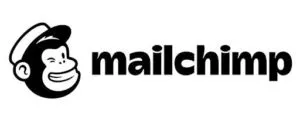Let me share a tale about a computer programming language that has become quite popular. The path of this creature, which goes by the name PHP, is quite inspirational. Early on, PHP language was thought to be little more than another programming language, neither especially inventive nor distinctive. The capacity to dynamically produce web pages was its hidden weapon, though. As a result, PHP language gradually gained popularity among web developers worldwide.
PHP gained acceptance as the internet expanded. It quickly established itself as the standard language for creating dynamic web applications, powering everything from social networking platforms to online markets. As it was open-source, anybody could contribute to its development, making it a popular among developers of all skill levels due to its simplicity of use and adaptability.
However, the advent of the CMS (content management system) era marked PHP’s true moment of glory. Because of the emergence of platforms like WordPress, Drupal and Joomla, PHP language has taken the lead in the field of online development. Due in large part to the flexibility of PHP, these platforms made it simple for non-technical people to construct and maintain websites.
The internet as we know it today was built on PHP as a result. Its success story is evidence of the effectiveness of open-source cooperation and the creativity of the development community. Everything is possible with PHP language, including the development of cutting-edge online apps and sophisticated e-commerce websites.
What is PHP Language?
Rasmus Lerdorf released the server-side scripting PHP language as an open-source project in 1994.
What follows is a condensed version of the PHP reference manual:
- The initials “PHP” stand for “Hypertext Processor.”
- Its popularity in the business world as a free and open-source scripting language spans both the fringes and the mainstream.
- PHP language scripts don’t ever leave the server, unlike those written in other languages. Compilers and extensions are available for no cost.
- W3Techs found that 78% of all websites that used a known server-side programming language.
- On November 26, 2020, PHP 8.0 was released with numerous enhancements to the program’s performance and security.
- Many people are working on PHP; over 70,000 have contributed to its open-source codebase on GitHub.
- According to Glassdoor, a PHP developer’s average annual salary in the United States is nearly $87,000.
- According to a survey by Stack Overflow, the top industries that employ PHP are the technology sector, online retail, and the media.
Main functions of PHP Language
-
Server-side Scripting
The most used language for server coding is PHP. Before the user’s browser receives the HTML code, the server runs the PHP code. This function allows PHP to build dynamic web pages that capture user information and store it in databases. PHP code may be added straight to an HTML page with specific tags like:

-
Data Processing
In addition to forms, cookies, and databases, PHP can also be used to process and manipulate data from other sources. Thanks to PHP’s in-built form-handling functions, developers can access user-submitted information through HTML forms, such as the $_GET and $_POST variables. Uploading files, sending emails, and communicating with APIs are all possible using PHP.
-
Session Management
PHP’s built-in session management features make it easy for programmers to monitor user behavior across multiple pages and sessions. The ability to store user information across requests and conduct authentication is a valuable byproduct. A session ID is generated for each PHP session and is saved in a cookie on the user’s browser. PHP session functions include session_start(), session_id(), session_name(), and session_destroy().
-
Object-oriented Programming
PHP’s adherence to OOP encourages the development of modular, reusable code. This can potentially simplify the process of creating and updating advanced software. PHP’s implementation of classes, objects, inheritance, and interfaces is a testament to the language’s ability to work with the full capabilities of object-oriented programming. PHP’s object-oriented features allow developers to make their classes and objects, which can then be used to store and retrieve information.
-
Web Services
Internet-accessible application programming interfaces (APIs) are something PHP can be used to build and use. Integrations with third-party web-based software and services can benefit from this, such as soap_client() and soap_server().
Benefits of PHP Language
- PHP’s Open-Source Delivery Saves Budget
Even though modern developers are likely familiar with open-source PHP languages, this presents a unique benefit for businesses hoping to scale their PHP development workflow. There is no cost to use PHP language, and there is no software to download or license. Because of the ease of access to the product, a large and engaged global community has been formed.
An ever-growing set of tools and a more bottomless well of talent result from nearly three decades of collaboration in the open-source software community. Developers can stop “reinventing the wheel” because hundreds of ready-made, effective PHP-based solutions are released annually.
- PHP Development Saves Time
PHP language was designed as a partially object-oriented language, so it encourages code reuse. Work hours can be shaved off of the software development process using reusable PHP components. It has a colossal variety of PHP libraries that help you carry-out the tasks of coding in a hassle-free way.
Symfony, CodeIgniter, Laravel, Joomla, and WordPress are all examples of PHP frameworks that provide functionality and offer efficient and secure development processes that reduce stress for the whole team.
Since its inception, PHP language has been designed to facilitate the development of a wide range of web applications thanks to its in-built support for GET and POST functions and HTML and URL scripting. This time savings means less work and a quicker payoff for businesses.
- PHP Code Is Flexible and Integrative
PHP can be used on Windows, Unix, Linux, and Mac OS X, among others. Moreover, PHP’s flexibility on the server side is unparalleled. PHP’s backend is compatible with more than 20 different database systems, including MySQL, MongoDB, PostgreSQL, and many others. It also supports Apache, Microsoft IIS, Netscape, iPlanet, Caudium, Xitami, and Tornado servers.
Thanks to PHP, businesses no longer need to sweat the possibility of compatibility errors when developing cross-platform applications. Now, businesses can use their existing IT infrastructure with minimal outlay.
- Lightning Speed Performance
Fast page loads are essential to retaining website visitors. Unfortunately, the average human attention span is only about six to eight seconds, so if the website’s databases are slow, users will quickly leave with a negative impression. On the other hand, PHP language guarantees fast turnaround times using its speedy data processing features, excellent customization potential, and efficient integration with various custom management systems. Graph of PHP execution times, showing that version 7.4 is the fastest overall.
- Speed Comparison
PHP scripts are much more efficient at solving real-time problems than scripts written in other languages because they were designed with dynamic web page generation in mind. By adding PHP to their HTML files, developers can turn their sites’ static front-end code into fully functional, interactive applications. PHP is a fantastic language for developing fully functional websites from scratch using static HTML.
7 Global Websites That Use PHP Language
1. Facebook

With more than 1.49 billion monthly active users, Facebook is undoubtedly the most well-known social media web application. It is not built using PHP, but PHP was used to develop the early versions of the social media platform. PHP language was instrumental in the development of Facebook during its early years.
Mark Zuckerberg, the founder of Facebook, developed the initial version of the website using PHP and MySQL. He used a combination of HTML, CSS, and JavaScript to create the website’s front-end and PHP to handle the back-end processing. Over the years, Facebook has moved away from using PHP for its core platform and developed its programming language, Hack. However, PHP still plays a vital role in the development of many third-party applications and plugins for Facebook, as well as for other web-based applications.
In addition, Facebook has contributed significantly to the PHP community by releasing several open-source projects, including HHVM, a virtual machine for executing PHP code, and Hack, a programming language compatible with PHP. These projects have helped to improve the performance and scalability of PHP-based web applications.
2. Wikipedia

Several languages, including PHP, were used to create Wikipedia, the online encyclopedia. PHP language is used for the website’s back-end processing, which includes generating dynamic content, handling user input, and interacting with databases.
MediaWiki, the software used by Wikipedia, is a PHP-based application developed to make and maintain wikis like this one. Wikipedia relies on MediaWiki because it offers many valuable tools, such as user authentication, content management, revision control, and more.
Using PHP and other web technologies, Wikipedia has built a robust and intuitive system available to millions of people worldwide. Because of this, Wikipedia has become one of the most visited sites on the web and can process vast amounts of data and traffic.
3. Tumblr

Memes initially surfaced on Tumblr, which today has over 325 million blogs and 555 million unique monthly visitors. The Zend Framework, a PHP-based framework with a number of tools for building websites and apps, serves as the foundation for Tumblr. Because of its powerful capabilities and versatility, Zend Framework is used by many PHP developers globally.
Tumblr also leverages web technologies including JavaScript, HTML, and CSS in addition to PHP language. Several technologies were used to create the interface and its dynamic features, such as endless scrolling and real-time updates. The website’s accessibility to people throughout the world as a result of being developed with PHP and other web technologies is primarily responsible for its success.
Due to its ability to handle huge volumes of information and users, Tumblr is currently one of the most popular microblogging platforms. In 2016, Tumblr switched to PHP7, citing notable speed gains and the ability to use language features like scalar type hints and return type declarations.
4. MailChimp

It’s no wonder that one of the primary leaders in the email marketing industry uses scalable PHP databases in its backend. As of 2014, MailChimp uses PHP to actively send over 400 million emails to its 7 million registered users. The email marketing giant stresses that: “It’s the only language we use for everything touching the production MailChimp application.” It is a powerful tool for integrating with Mailchimp and other third-party APIs. It can be used to create custom solutions that meet the specific needs of businesses and organizations. It provides built-in functions and libraries for making HTTP requests and parsing JSON data, which makes it well-suited for interacting with the Mailchimp API.
PHP can be used to integrate with Mailchimp’s API to manage email campaigns, lists, and subscribers. Mailchimp provides a robust API that allows developers to interact with their platform programmatically, and PHP is a popular choice for integrating with this API.
5. WordPress

A common content management system (CMS) for creating webpages and blogs is WordPress. It was developed with PHP, a server-side programming language that is ideal for creating dynamic online applications.
Many WordPress functionality, including database connectivity, user authentication, and template rendering, are powered by PHP. In response to the user’s requests and inputs, PHP is utilized to dynamically build HTML pages and content whenever a user accesses a WordPress site. The way that material is presented on a website depends on the custom themes that developers may make using the template system that WordPress employs. PHP is frequently used to provide dynamic content and manage backend functionality in these themes, which are normally developed using a combination of HTML, CSS, and JavaScript.
WordPress also makes use of PHP language to power a number of plugins, which are bits of code that can be loaded and executed on a website to add additional features and capabilities. To increase the functionality of the CMS, these plugins may connect with several WordPress APIs and hooks using PHP language.
PHP powers many of WordPress’ basic functions and offers the flexibility and scalability required to create custom themes and plugins. As a result, PHP is a crucial part of the platform.
Conclusion
PHP language has become one of the most widely used content management systems (CMSs) on the internet because to the ease with which millions of people all over the world can now easily construct and maintain their own websites and blogs.
FAQs for PHP Language
What is the syntax of PHP?
PHP code is embedded within HTML and enclosed in <?php ?> tags. Here’s an example of PHP code that displays today’s date:

What are the data types supported by PHP?
PHP supports many data types, like strings, integers, booleans, arrays, floating-point numbers, objects, and NULL.
How do I connect to a database using PHP?
You may connect to a database by using PHP’s built-in functions as mysqli_connect() or PDO. Here’s an illustration of connecting to a MySQL database using mysqli_connect():

What is object-oriented programming in PHP?
Object-oriented programming (OOP) is a programming paradigm that uses objects and classes to represent real-world entities and behaviors. In PHP, you may use OOP to create reusable code, encapsulate data and functions, and improve code maintainability and scalability.
How can I debug PHP code?
You can use various debugging techniques in PHP, such as:
- Use print_r() and var_dump() functions to display the contents of variables
- Enable error reporting and display errors using error_reporting() and ini_set() functions
- Use a debugger tool such as Xdebug
- Use logging and tracing tools for tracking the execution of the code



